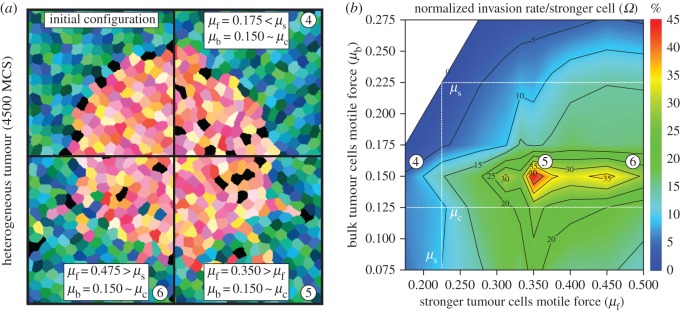
Citation
A. Hallou, J. Jennings and A. Kabla
Royal Society Open Science 4(8):161007 (2017)
Abstract
Abstract
Heterogeneity within tumour cell populations is commonly observed in most cancers. However, its impact on metastatic dissemination, one of the primary determinants of the disease prognosis, remains poorly understood. Working with a simplified numerical model of tumour spheroids, we investigated the impact of mechanical heterogeneity on the onset of tumour invasion into surrounding tissues. Our work establishes a positive link between tumour heterogeneity and metastatic dissemination, and recapitulates a number of invasion patterns identified in vivo, such as multicellular finger-like protrusions. Two complementary mechanisms are at play in heterogeneous tumours. A small proportion of stronger cells are able to initiate and lead the escape of cells, while collective effects in the bulk of the tumour provide the coordination required to sustain the invasive process through multicellular streaming. This suggests that the multicellular dynamics observed during metastasis is a generic feature of mechanically heterogeneous cell populations and might rely on a limited and generic set of attributes.
Figure sample

Collective invasion for heterogeneous tumours. (a) Snapshots of in silico experiments with 24 stronger cells. Top-left quadrant represents the initial state of the system (green–blue cells are non-motile, yellow–red cells are bulk tumour cells, black cells are stronger tumour cells). The three other quadrants (4–6) represent the states of the system for different values of μb and μf at t=4500 MCS. (b) Heat map of the normalized invasion rate per stronger cell Ω. The maximum is observed for μb=0.150 and μf=0.350. Details on the computation of Ω from in silico experimental data are provided in the electronic supplementary material.

